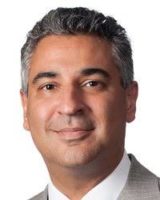
The need for physicians is rising along with the number of older Americans. But demand is growing much faster than supply, according to a recent report by CNBC.
A 2019 study by the Association of American Medical Colleges has found that the United States is likely to see a shortage of anywhere from 46,900 to 121,900 primary and specialty care physicians by 2032.
Part of the problem is that the doctors themselves are getting older. In fact, one-third of doctors currently working will be older than age 65 in the next decade, CNBC reported.
“We know older patients use two-to-three times as many medical services as younger patients, and the number of people over age 65 will increase by almost 50%, just in the next 10 to 15 years alone,” Atul Grover, M.D., executive vice president of the AAMC, told the news outlet.
The trend is more pronounced in some states than others, and is influenced by the number of graduating physicians in the area, as doctors tend to stay where they’re trained.
One state that’s attempting to tackle the problem is Arizona, which foresees a particularly dire doctor drought. It recently passed laws making it easier for people licensed in other states to gain similar accreditation in Arizona, including doctors and nurses, CNBC has found.
Meanwhile, a Phoenix-based health network has launched two new graduate medical education programs in that city, in addition to a family medicine residency it already runs, CNBC noted.
But more residency programs are needed nationwide, the report concluded. “Medical schools have done their part over the last 15 years by expanding enrollment by almost 30%. The challenge is that none of those physicians can actually go out and practice in their communities,” Grover told the news outlet.



